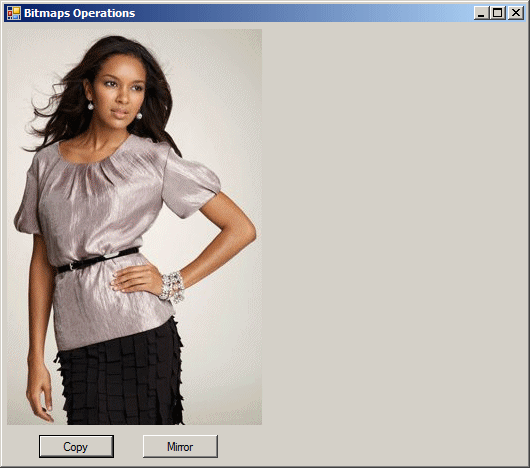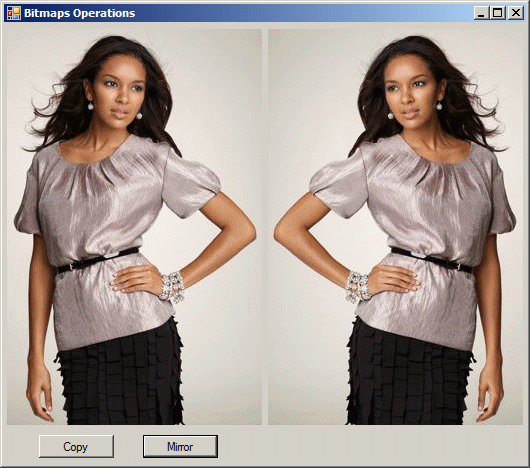|
|
Mirroring a picture consists of changing the horizontal
direction of a picture. This is done by transferring each pixel from the
source of the picture to a target picture on the opposite side:
|

To mirror a picture, get each of its pixels from one
side of its horizontal position and transfer it to the opposite side of
the horizon position. The vertical position of each pixel stays the same.
This can be done as follows:

System::Void btnMirror_Click(System::Object^ sender, System::EventArgs^ e)
{
Graphics ^ graph = pbxSource->CreateGraphics();
Bitmap ^ bmpSource = reinterpret_cast<Bitmap ^>(pbxSource->Image);
Bitmap ^ bmpDestination =
gcnew Bitmap(pbxTarget->ClientSize.Width,
pbxTarget->ClientSize.Height);
int width = bmpSource->Width;
int height = bmpSource->Height;
for(int x = 0; x < width; x++)
{
for(int y = 0; y < height; y++)
{
Color clr = bmpSource->GetPixel(x, y);
bmpDestination->SetPixel(width - x - 1, y, clr);
}
}
pbxTarget->Image = bmpDestination;
}

To support mirroring, the Bitmap class inherits
a method named RotateFlip from its parent Image class. Its
syntax is:
public:
void RotateFlip(RotateFlipType rotateFlipType);
This function takes one argument that specifies the
mirroring option through the RotateFlipType enumeration. The
members of the RotateFlipType enumeration that can be used to
mirror a picture are RotateNoneFlipX and Rotate180FlipY.
Here is an example of mirroring a picture:
System::Void Mirror_Paint(System::Object^ sender,
System::Windows::Forms::PaintEventArgs^ e)
{
Bitmap ^ bmpPicture = gcnew Bitmap(L"person.jpg");
bmpPicture->RotateFlip(RotateFlipType::RotateNoneFlipX);
e->Graphics->DrawImage(bmpPicture, 10, 10);
}
When this method is called, the bitmap horizontal
direction would be changed.